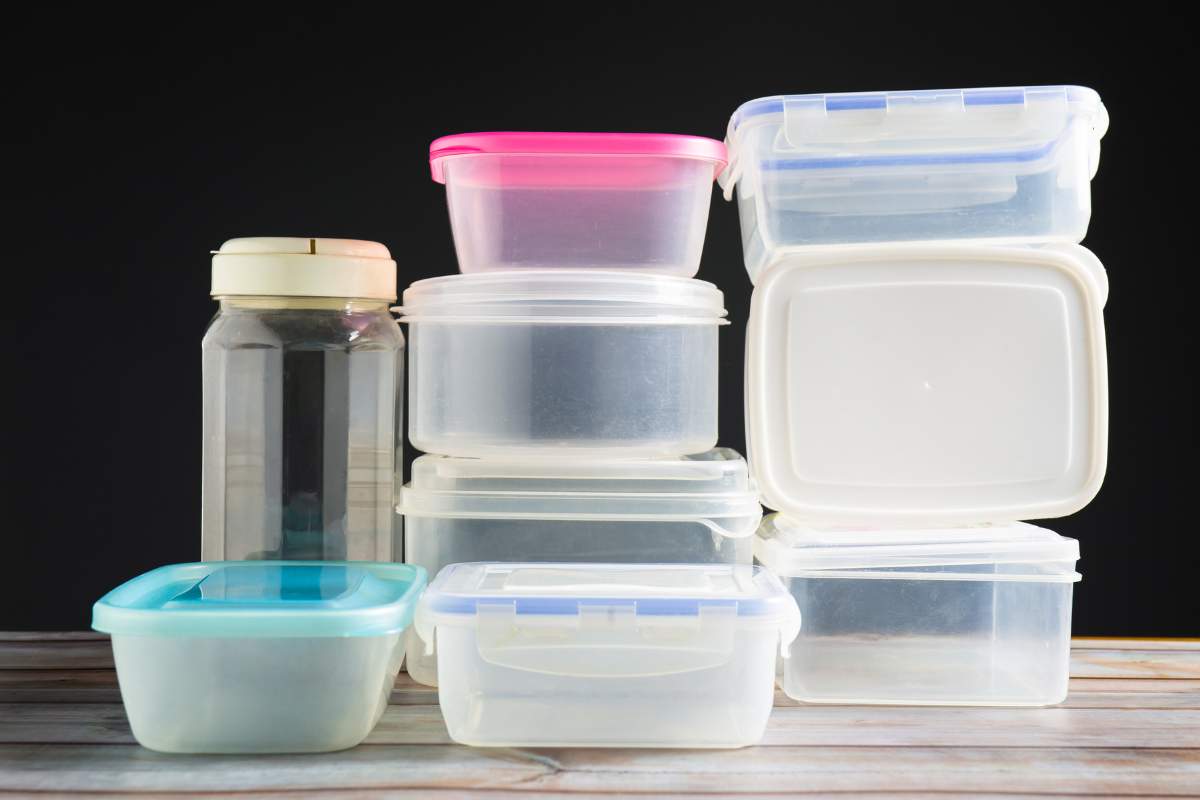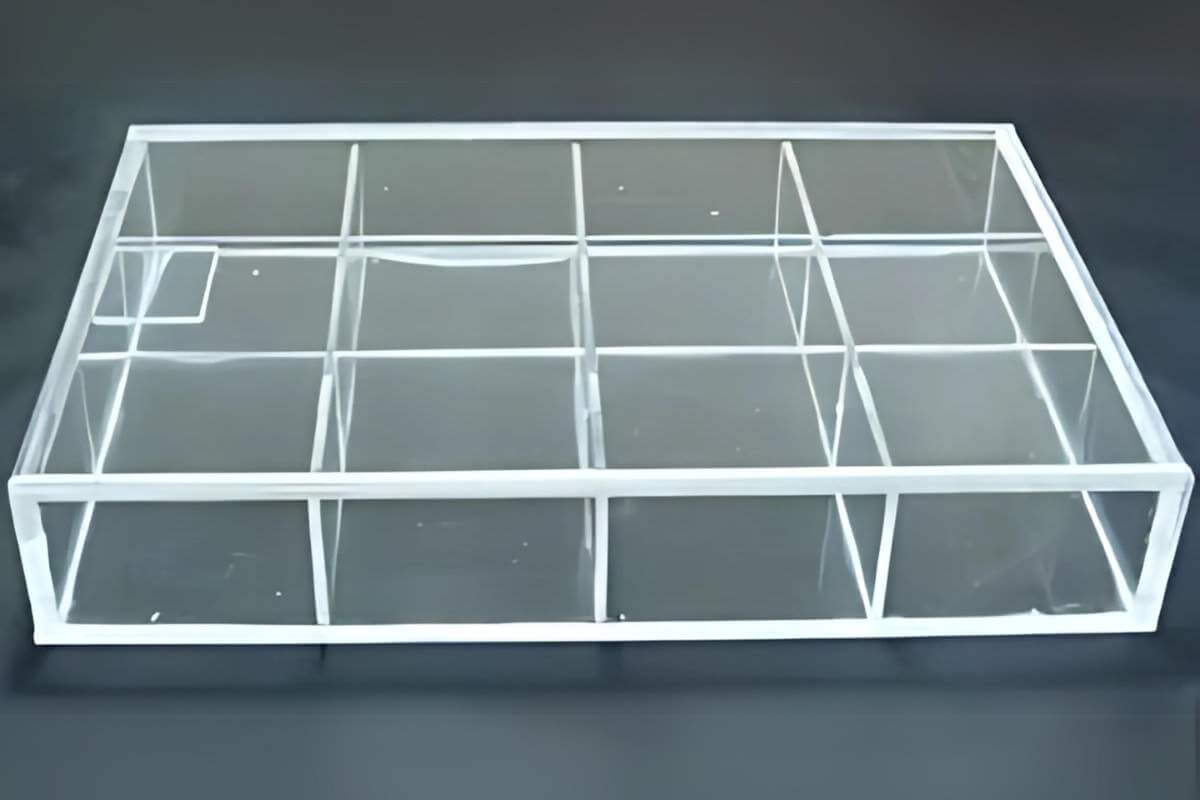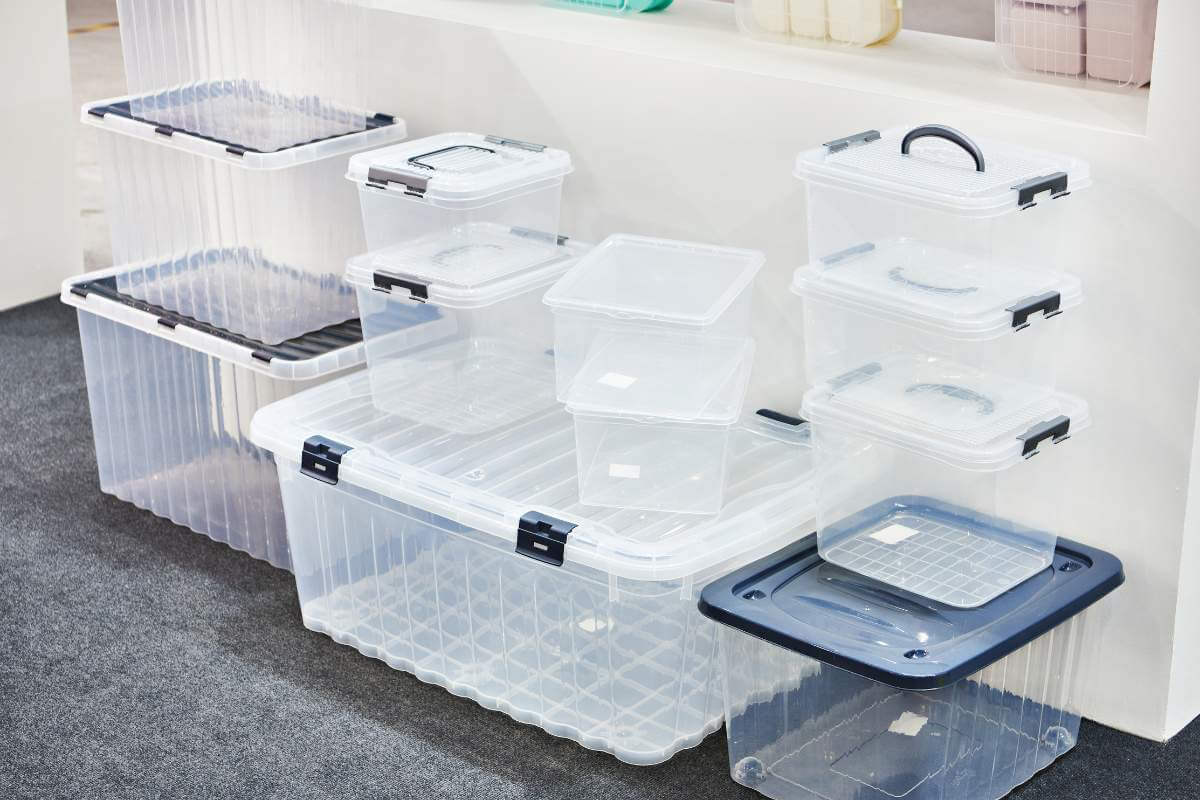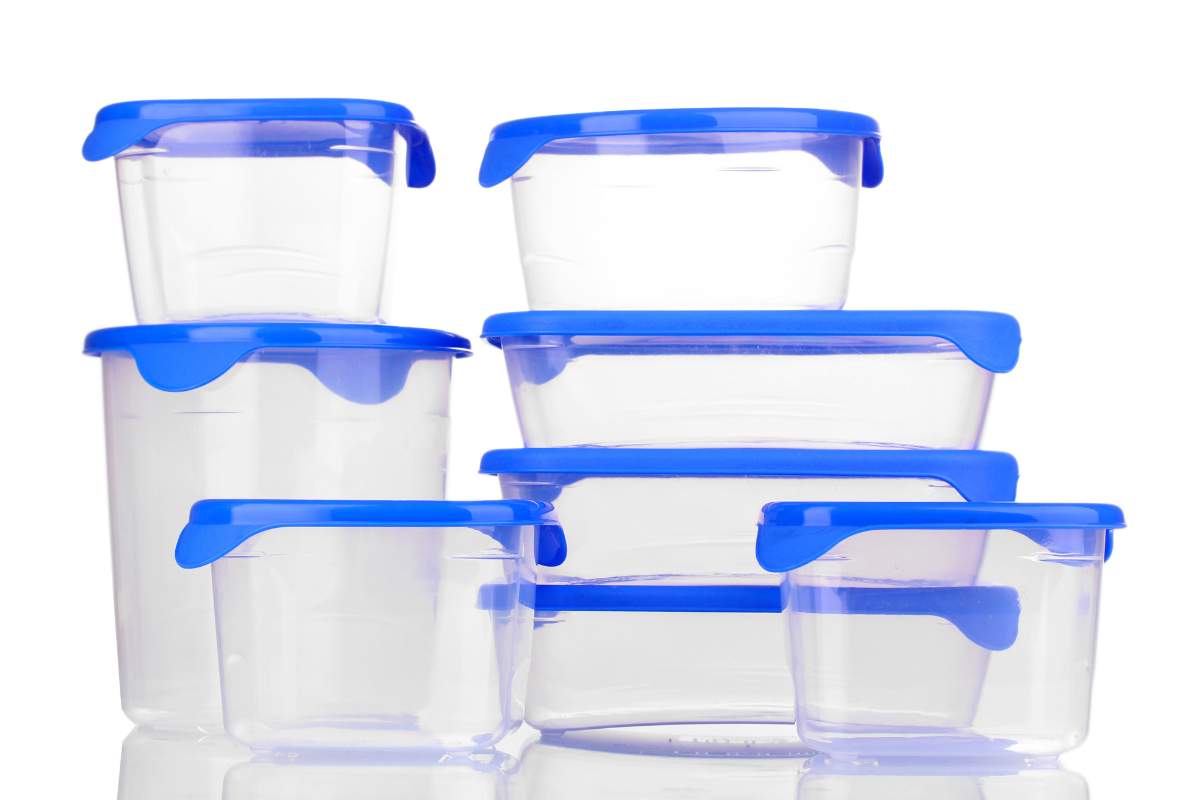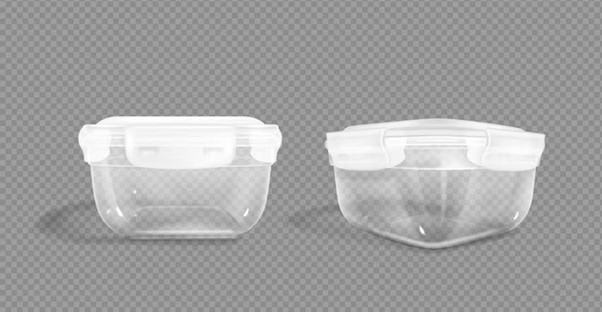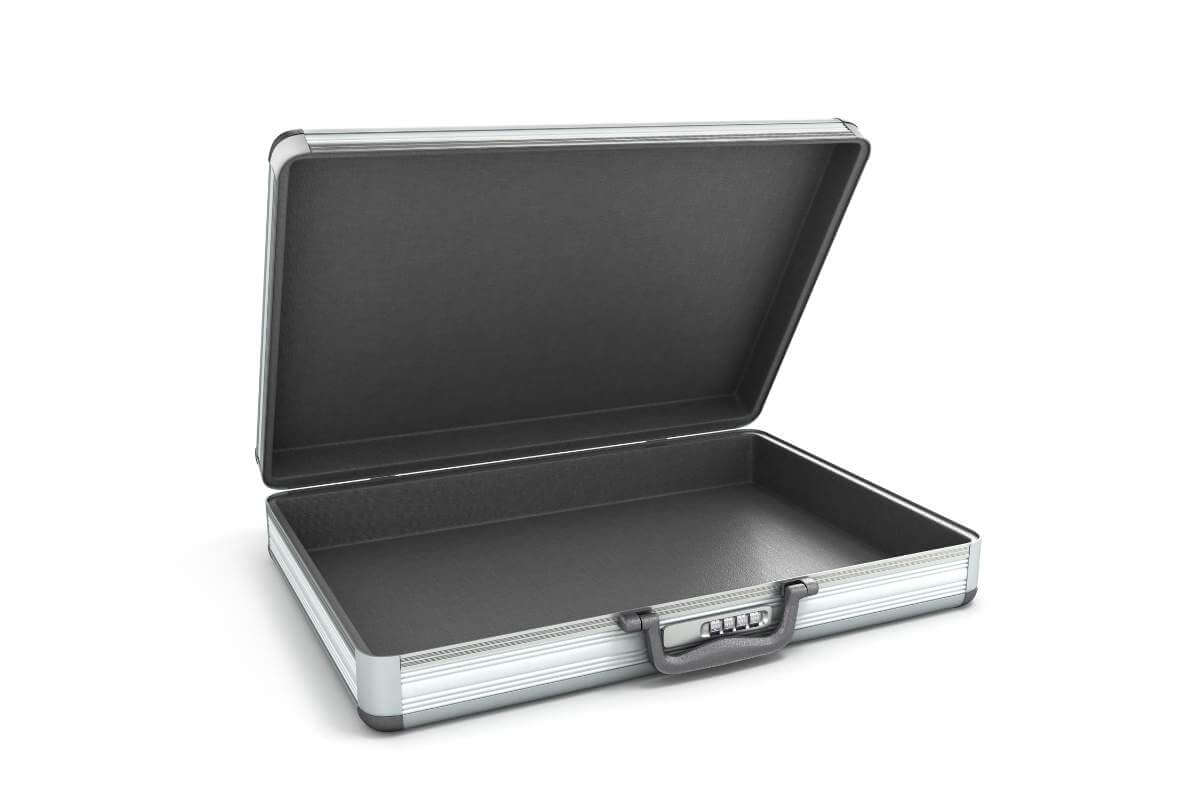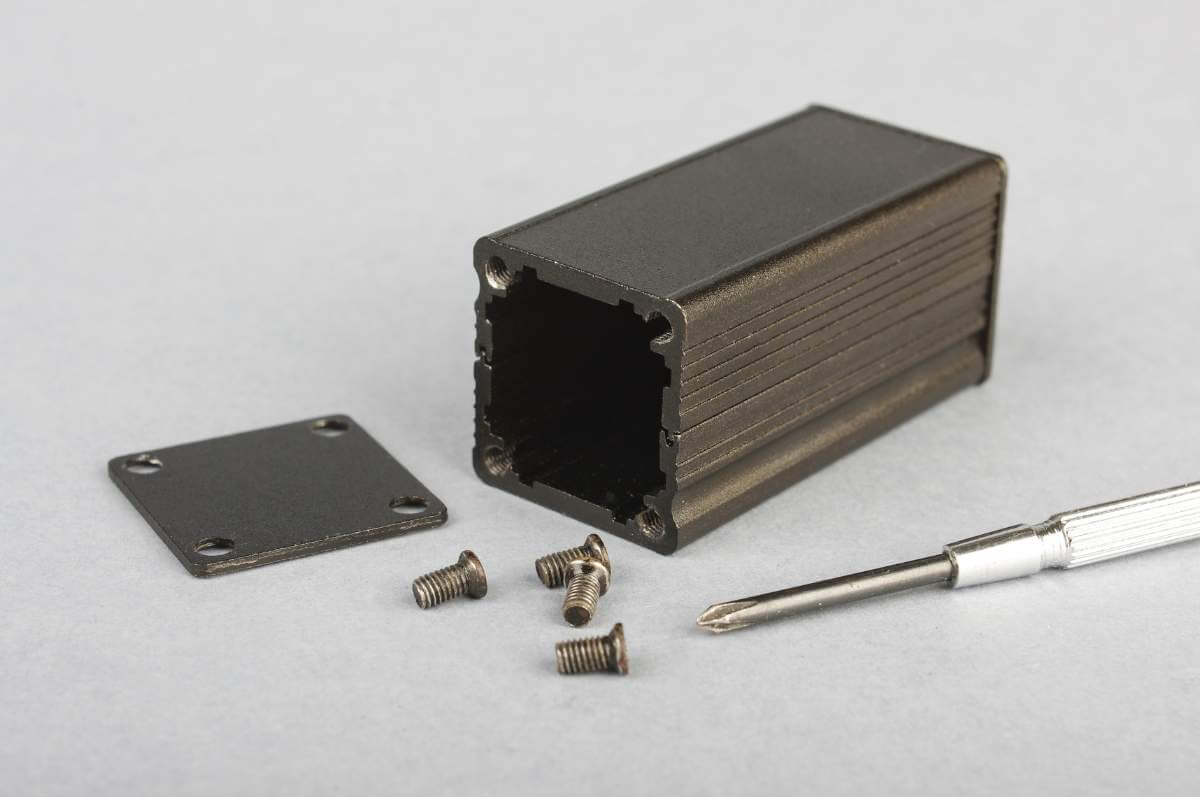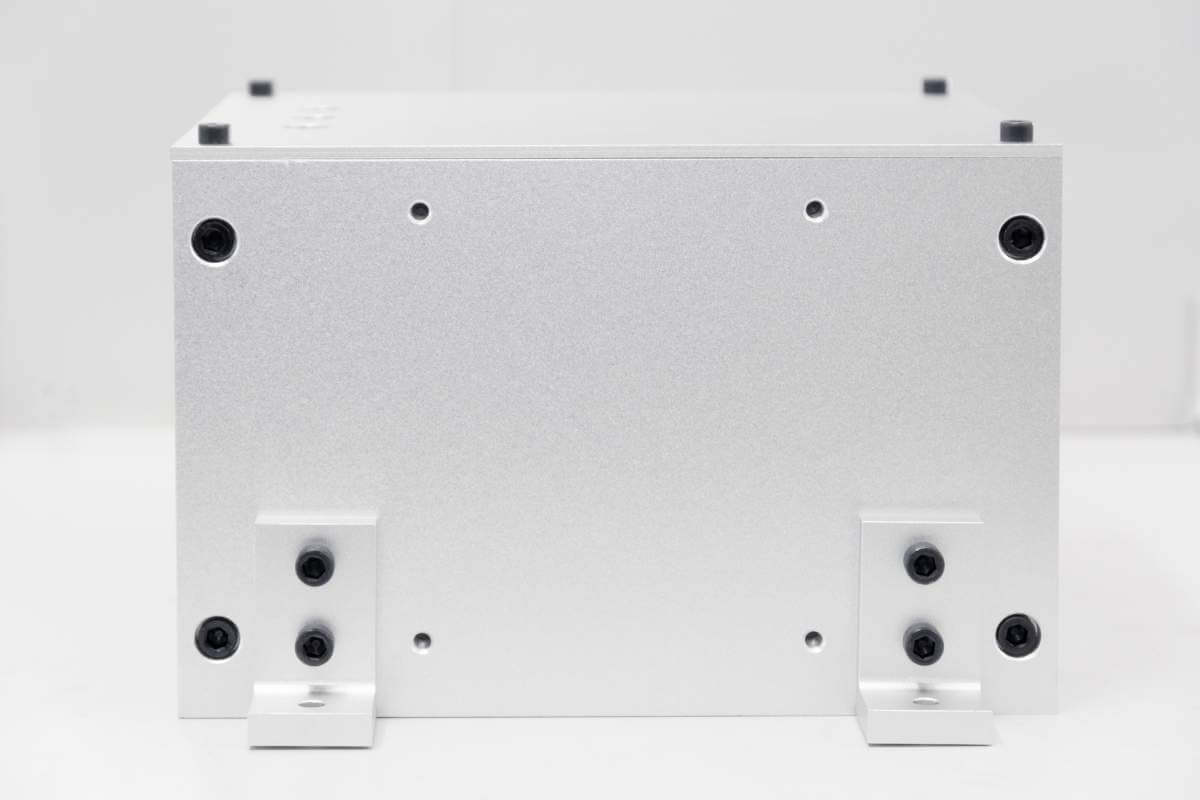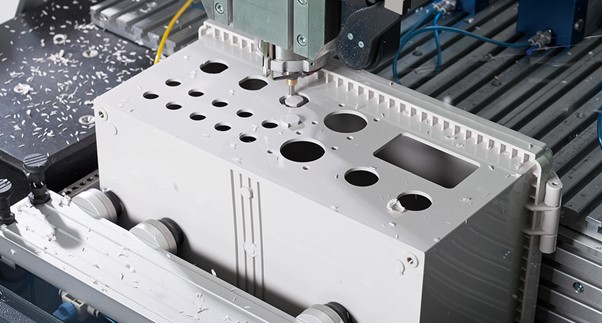Michigan is de thuisbasis van een robuuste productiesector, met name in kunststof spuitgieten. Het proces heeft brede toepassingen in de productie van zeer nauwkeurige producten in industrieën zoals de auto-industrie, medische apparatuur, elektronica en verpakkingsindustrie. Plastic spuitgietbedrijven uit Michigan hebben bij bedrijven van over de hele wereld de reputatie opgebouwd betrouwbaar en innovatief te zijn.
Bovendien bieden deze kunststof spuitgietbedrijven in Michigan een uitgebreide lijst van diensten, afhankelijk van de eisen van een fabrikant, variërend van rapid prototyping en tooling tot massaproductie. In dit artikel zullen we enkele van de toonaangevende spuitgietfabrikanten in Michigan regio en de diensten die ze aanbieden.
1. Hi-Tech Schimmel & Techniek

Hi-Tech Schimmel & Techniek is een tweede generatie familiebedrijf en fabrikant van kunststof spuitgietmatrijzen en producten, gevestigd in Mendon, Michigan, ten dienste van de industrie sinds 1994. Als toonaangevende fabrikant van kunststof mallen ligt de focus van het bedrijf op creativiteit, efficiëntie en producten van hoge kwaliteit.
Geïntegreerde diensten in spuitgieten
Hi-Tech Mold & Engineering biedt verschillende spuitgietoplossingen voor verschillende industrieën, waaronder de auto-industrie, luchtvaart, medische apparatuur en elektrische voertuigen. Hun innovatieve technologieën samen met meer dan 30 jaar ervaring stellen hen in staat om efficiënte diensten te leveren om aan de productontwikkeling en productiedoelstellingen van klanten te voldoen.
Hun reeks spuitgietservices omvat:
- Spuitgieten en persen: Het beste van beide, injectie en compressie, op maat gemaakt voor ingewikkelde ontwerpen en complexe geometrieën.
- Gas Assist Molding: Een procesontwikkelingsstrategie gericht op het verminderen van de hoeveelheid materiaal en het gewicht van het onderdeel, maar tegelijkertijd de sterkte en belastbaarheid ervan te verhogen.
- Inzetgieten: Het proces waarbij metaal of andere materialen in één keer in een kunststof onderdeel worden verwerkt om de stijfheid en andere eigenschappen te verbeteren.
- Lage druk spuitgieten: Toegepast op dunne en complexe onderdelen die niet onderhevig mogen zijn aan hoge druk tijdens de verwerkingsfase.
- Smartfoil Molding: Ze gebruiken flexibele folie om dunne en complex gevormde onderdelen te maken met een laag materiaalgebruik.
Advanced Tech Centrum voor Precisiefabricage.
Het bedrijf maakt gebruik van ultramoderne en geautomatiseerde systemen die efficiëntie en kwaliteit leveren. Hier doen we matrijsproeven en validaties met de beste technologieën: Core Back, Coining en Injection-Compression Molding. Deze voorwaarden van innovatie stellen ons in staat om systematisch te voldoen aan de hoogste eisen van de industrie en de verwachtingen van de klant.
Expertise en wereldwijd bereik
Hi-Tech Mold & Engineering heeft zichzelf gevestigd als een bedrijf dat zelfs de meest complexe programma's met grote professionaliteit kan leveren. Van kleine gereedschapspakketten tot grootschalige voertuigplatforms bieden wij complete oplossingen voor alle fasen van productontwikkeling. Door het bereiken van wereldwijde affiliaties, stellen zij klanten in staat met complete service, economische oplossingen en efficiënte projectuitvoering.
Certificeringen en kwaliteitsborging
Hun streven naar kwaliteit wordt ondersteund door industriecertificeringen, waaronder IATF 16949, AS9100D, en ISO 9001:2015 weerspiegelt een toewijding aan de gestage verbetering van efficiëntie en productkwaliteit. Of u nu een nieuw product wilt laten ontwerpen en bouwen of een bestaand product wilt laten opvoeren, u heeft Hi-Tech Mold & Engineering nodig - de eerste keer, op tijd, elke keer.
Als u op zoek bent naar plastic injection molding bedrijven in de buurt van mij op Michigan locatie voor gas assit injection molding of insert molding, dan raden wij u aan contact met hen op om uw project te controleren en u een prijsopgave.
2. IJzerhout Kunststoffen

IJzerhout Kunststoffen begonnen in 1979 en heeft een reputatie opgebouwd als ingenieursbedrijf met hoge standaarden op het gebied van productiecapaciteit. Het bedrijf heeft twee fabrieken in Ironwood, Michigan, en Two Rivers, Wisconsin. In zijn hoedanigheid als marktleider in spuitgieten heeft het bedrijf zijn doel om voortdurend klanttevredenheid van topkwaliteit te leveren door middel van state-of-the-art engineering- en productietechnieken niet uit het oog verloren.
Mogelijkheden en expertise
Ironwood Plastics heeft een breed scala aan spuitgietoplossingen op maat ontwikkeld voor verschillende behoeften. Hun technisch personeel maakt gebruik van de modernste technologieën en normen van de industrie en is in staat om eenvoudige tot complexe spuitgietbewerkingen nauwkeurig uit te voeren. Of u nu kleine of grootschalige productie voor uw project nodig hebt, ze hebben de ervaring die ons zal helpen uw doel te bereiken.
Dankzij hun investeringen in geavanceerde apparatuur en voortdurende training van ons personeel kunnen we een breed scala aan giettechnieken aan, waaronder:
- Op maat gemaakte spuitgiettechniek: Hun kerncompetentie is het leveren van precisiegevormde producten voor de auto-industrie, medische apparatuur, consumentenproducten en vele andere sectoren.
- Secundaire diensten: Het bedrijf heeft een volledig aanbod van secundaire bewerkingen zoals assemblage, decoreren en testen om een strenge kwaliteit van de eindproducten te garanderen.
- Geavanceerde materiaalverwerking: Ze maken ongeveer alle gangbare thermoplasten en hoogwaardige polymeren, dus we vinden altijd de perfecte pasvorm voor uw specifieke product.
- Complexe matrijsontwerpen: Om moeilijke creaties te maken waarvoor uitgebreide giettechnieken nodig zijn.
Als bedrijf heeft Ironwood Plastics erkend dat zijn kracht ligt in professionele engineering, gekoppeld aan ervaring en professionaliteit. Ze bieden uitstekende klantrelaties en zorgen ervoor dat we diensten leveren die voldoen aan de technische eisen van klanten en die bijdragen aan het creëren van duurzame bedrijfswaarde.
Ideale plaatsen om jezelf te positioneren voor service
- Ironwood, Michigan is het hoofdkantoor van het bedrijf.
1235 Wall Street, Ironwood, MI 49938
Telefoon: 906.932.5025
- Afdeling Two Rivers, Wisconsin
Postbus 2800, Two Rivers, Wisconsin 54241
Telefoon: 920.793.3060
Dergelijke plaatsen maken het voor ons mogelijk om klanten in heel Noord-Amerika en andere delen van de wereld te bereiken met snelle leveringsservices en gratis klantenservice.
Kwaliteitscertificering en naleving
Ze zijn er trots op dat ze in het bezit zijn van ISO 9001 en IATF 16949:2016 certificeringen, die bevestigen dat het bedrijf de normen voor kwaliteitsbeheer handhaaft. Daarnaast hanteert het bedrijf ook normen zoals MAPP Manufacturing Alliance, ITAR, enzovoort.
Als lid van de CTB bedrijvengroep, een wereldwijde leverancier van landbouw- en voedselverwerkingsapparatuur, zijn we goed geplaatst om onze expertise uit te breiden en op de hoogte te blijven van de nieuwste productietechnologieën.
Ironwood Plastics is niet alleen een spuitgieter, maar ook een strategische partner die innovatieve technische oplossingen en superieure nauwkeurigheid levert. Als u een nieuw product wilt ontwerpen of een bestaand product wilt verbeteren, hebben ze alle benodigde middelen en ervaring om u van dienst te zijn.
Als je op zoek bent naar plastic spuitgietbedrijven in Michigan die het volgende bieden product assemblage diensten, speciaal materiaal van injectie het vormen delen, u kan over hen voor uw verwijzing denken, of cotnact hen om uw project aan te halen.
3. MMI Engineered Solutions

MMI Engineered Solutions is een one-stop solution provider voor OEM-toepassingen die lichtgewicht oplossingen ontwerpt en produceert tegen lagere kosten en met betere prestaties. Met onze focus op geavanceerde composieten en kunstharsen leveren we uitzonderlijke componenten en samenstellingen voor hoogwaardige toepassingen in de auto-, luchtvaart- en materiaalverwerkingsindustrie.
Hun belangrijkste specialisaties zijn engineering, tooling en productie, om de beste ontwerpen te maken met behulp van technologische vooruitgang, bieden we producten die ingenieurs en fabrikanten helpen hun moeilijkste problemen op te lossen. Of het nu gaat om spuitgieten, blazen of het gebruik van geavanceerde materialen in producten, het bedrijf biedt het beste als het gaat om prestaties in alle stadia van de productie.
Kerndiensten:
- Spuitgieten en blazen: Nauwkeurige thermoplastische onderdelen en subassemblages.
- Oplossingen voor materiaaltransport: Specialisatie in nieuwe composieten en kunstharsen voor materiaaltransporttoepassingen.
- Gereedschap: Een gereedschapscentrum dat in eigen huis en binnen korte tijd geavanceerde matrijzen kan ontwerpen en maken.
- Ontwerpdiensten: We kunnen creatievere oplossingen bieden omdat ons ontwerpteam werkt met 3D-software, Moldflow en FEA-analyses.
Wereldwijde aanwezigheid en locaties:
- Hoofdkantoor: Saline, Michigan, VS
- Andere Locaties: Troy, MI, Warren, MI, Monterrey, Mexico
Extra mogelijkheden:
- Eigen gereedschapmakerij: Korte doorlooptijden en een betere concurrentiepositie.
- Ontwerpondersteuning: CAD-, Moldflow- en FEA-tools als effectieve hulpmiddelen bij het oplossen van problemen.
- APQP-proces: Kennis van DFMEA/PFMEA, controleplannen en timing van projecten.
Gebaseerd op haar geschiedenis van succes in het ontwikkelen en leveren van hoogwaardige oplossingen, blijft MMI Engineered Solutions toonaangevend op de OEM-markt en biedt de tools en ondersteuning die nodig is om essentiële ontwerp- en fabricagekwesties aan te pakken.
Als je op zoek bent naar plastic spuitgietbedrijven bij mij in de buurt in Michigan die het spuitgieten het bewerken productie, slag het vormen of de ontwerpdiensten verleent, kunt u over hen voor uw verwijzing denken, of hen cotnact om uw project te citeren.
4. Jimdi Kunststoffen

Jimdi Kunststoffen is een marktleider in het aanbieden van geavanceerde kunststof spuitgieten en invoegen van mallen diensten. Het werd opgericht in 1997, in Allendale, Michigan. De kernactiviteit is het leveren van precisie spuitgegoten onderdelen en assemblages aan een breed spectrum van industrieën wereldwijd. Dankzij deze principes kunnen ze samenwerken met klanten in de auto-industrie, consumentengoederen, medische apparatuur en vele andere industrieën en zo bedrijfsoplossingen bieden voor een wereldwijde markt.
Kerncompetenties
- Spuitgieten: Ze bestaan uit 16 persen van 110 ton tot 1.100 ton waarmee kleine tot grote volumes kunnen worden geproduceerd. Bovendien gebruiken ze verschillende soorten materialen en leveren we specifieke diensten zoals insert molding en over-molding.
- Gereedschap: We nemen de volledige verantwoordelijkheid voor je tooling, van ontwerp tot try-out. We hebben goede bronnen met lokale en overzeese gereedschapmakerijen, zodat we aluminium gereedschappen en prototypes van hoge kwaliteit kunnen aanbieden.
- Techniek: Hun professionele ingenieurs gaan met klanten om de tafel zitten om de juiste materialen en de meest geschikte spuitgiettechnieken te bepalen. Bovendien helpen ze klanten met een reeks diensten die beginnen met prototyping en zich uitstrekken tot end-of-life services.
- Assemblage en secundaire activiteiten: De assemblagelijntechnologieën omvatten zowel automatische als handmatige assemblagestations, evenals sonisch lassen, zijdescreening, tampondruk en lasermarkeren.
De toewijding van bedrijven aan kwaliteit
Het management van Jimdi Plastics heeft zich gerealiseerd dat kwaliteit het resultaat is van een doelgerichte aanpak en hard werken. Ze houden zich strikt aan de ISO-certificeringsnormen om de klant tevreden te stellen met hoogwaardige onderdelen.
Waarom Jimdi Plastics kiezen?
- Breed persbereik: Door de integratie van 16 persen kunnen ze met relatief gemak verschillende productievolumes verwerken.
- Innovatieve oplossingen: Door gebruik te maken van vooruitstrevende giettechnologieën en materialen kunnen we aan de behoeften van onze klanten voldoen.
- End-to-end ondersteuning: Van het ontwerp en de engineering van het product tot de assemblage van het product en secundaire bewerkingen, ze bieden complete productiediensten.
- Wereldwijd bereik: Ze leveren kosteneffectieve spuitgietonderdelen waarmee hun klanten hun doelen op de internationale markt kunnen bereiken.
Als u op zoek bent naar kunststof spuitgietbedrijven bij mij in de buurt in Michigan die diensten levert op het gebied van gereedschapsmakerij, spuitgieten, productassemblage en engineering. Je kunt ze als referentie gebruiken of contact met ze opnemen om een offerte voor je project te maken.
5. PTI Kunststoffen

PTI Engineered Plastics, Inc. is een toonaangevende kunststof spuitgieter en fabrikant van kunststoffen en kunststof onderdelen en assemblages in Michigan - VS. PTI is al meer dan 3 decennia actief en levert aan verschillende industrieën zoals de medische, defensie/lucht- en ruimtevaartindustrie en andere sectoren. Dankzij haar nauwkeurigheid en creativiteit is PTI vandaag de dag een gewaardeerde leverancier voor bedrijven die op zoek zijn naar hoogwaardige kunststofproducten.
Kerncompetenties
- Kunststof spuitgieten: PTI levert diensten van een enkel prototype tot grootschalige productieruns. Voor prototype- en productiedoeleinden, voor productie in kleine aantallen of op contractbasis produceert PTI onderdelen van hoge kwaliteit volgens de hoogste normen.
- Eigen gereedschapmakerij: Kwaliteit begint bij het gereedschap. PTI heeft meer dan 30 jaar ervaring in het maken van matrijzen en gebruikt de meest geavanceerde technologie om nauwkeurige matrijzen te maken voor zijn gereedschapmakers. Deze interne capaciteit vertaalt zich direct in korte doorlooptijden en de mogelijkheid om kwaliteitsmatrijzen te leveren die worden gebruikt bij de productie van uw onderdelen, van ontwikkeling tot voltooiing.
- Prototypen: U krijgt onderdelen voor testen en ontwerpverificatie van PTI door middel van prototype spuitgietservices. In sommige toepassingsscenario's voor onderdelen met lage aantallen kan hetzelfde prototypegereedschap dienen als eerste productierun, waardoor het onderdeel sneller en goedkoper op de markt kan worden gebracht.
- Cleanroom spuitgieten: Vanwege de toenemende vraag naar schone productie in de medische en luchtvaartindustrie heeft PTI haar Klasse 8 cleanroom ruimte om over 10.000 voet. De uitbreiding verbetert de capaciteit van PTI om onderdelen te produceren zonder vervuiling en voldoet aan de ISO 13485 normen.
- Industrieel ontwerp: De PTI Industrial Design Group werkt direct samen met klanten aan de ontwikkeling van produceerbare productideeën. Hun directe interactie met ingenieurs en specialisten in tooling vermindert het trial-and-error proces dat kenmerkend is voor kunststof spuitgieten, waardoor de overgang van ontwerp naar productie wordt versneld.
Belangrijkste markten
- Medisch: PTI voldoet aan ISO 13485 en biedt dus onderdelen van medische kwaliteit voor gebruik in apparaten die nauwkeurigheid en prestaties vereisen. Of het nu gaat om chirurgische instrumenten, diagnoseapparatuur of implantaten, PTI garandeert dat alle onderdelen voldoen aan de wettelijke vereisten.
- Defensie/Ruimtevaart: PTI biedt speciale spuitgietproducten om te voldoen aan de eisen van de defensie- en luchtvaartmarkten. Dankzij hun cleanroom spuitgieten en geavanceerde materiaalbehandeling kunnen ze voldoen aan de meest uitdagende technologische eisen.
- Consumentenproducten: PTI biedt de markt voor consumentenproducten robuuste en scherp geprijsde spuitgietonderdelen voor algemeen gebruik.
Waarom kiezen voor PTI Engineered Plastics?
- Expertise en ervaring: PTI heeft meer dan drie decennia ervaring waardoor het bedrijf technische expertise kan bieden bij uitdagende spuitgietprojecten in verschillende industrieën.
- Geavanceerde cleanroom en spuitgietcapaciteit: Het bedrijf heeft zijn klasse 8 cleanroom spuitgietruimte vergroot en is uitgerust om zo flexibel te zijn als nodig is om te voldoen aan de strengste eisen op het gebied van neopreen voor de medische en luchtvaartindustrie.
- End-to-end ondersteuning: Als concept- en ontwerp-, tooling- en productiebedrijf biedt PTI een one-stop-oplossing die kwaliteit en korte levertijden garandeert.
Als je op zoek bent naar kunststof spuitgietbedrijven in Michigan die medisch spuitgieten met clreanroom shop, prototyping manufacturing en industriële diesign services aanbieden, kun je aan ze denken en ze cotnacteren om je project aan te prijzen.
6. Mdbio

Als kunststof mal bedrijf Medbio LLC heeft een uitstekende reputatie in de sector voor medische hulpmiddelen en is gespecialiseerd in nauwkeurige oplossingen, innovatie en precisie. De matrijzenmakers bij Medbio hebben toegang tot een moderne gereedschapsruimte en hebben deskundige matrijsontwerpers in dienst die SPI-klasse productiematrijzen kunnen ontwikkelen die het meest geschikt zijn voor de specifieke eisen van de klant.
Kerncompetenties
Geavanceerd ontwerp en engineering van gereedschappen
Medbio kan matrijzen ontwerpen met behulp van de meest geavanceerde software voor matrijsontwerp en stromingsanalyse op de markt. Hun team van ervaren ingenieurs maakt gebruik van reverse engineering en 3D-modellering van de matrijs om de vormbaarheid en integriteit van het gereedschap te verbeteren, samen met de prestaties van het product. Dit garandeert dat elk ontwikkeld gereedschap het beste productieproces en de beste kwaliteit producten heeft.
Animatie Vormfunctie
Medbio heeft geanimeerde video's over de werking van de matrijs met behulp van geavanceerde CAD-software. Deze animaties laten zien hoe de matrijs opent, sluit en functioneert tijdens de verschillende handelingen, zoals zijdelingse handelingen, meertraps uitwerpen en co-injectie spuitgieten. Het helpt klanten bij het uitvoeren van gedetailleerde ontwerpbeoordelingen en maakt het proces van het samenstellen van matrijsteams veel eenvoudiger.
Hoge precisie persen
Medbio gebruikt hogesnelheidsbewerkingscentra en verticale bewerkingscentra voor meer detail bij het maken van matrijzen. Hun machines omvatten:
- Milltronics VM20 verticale bewerkingscentra voor het fijnere werk.
- Roders voor een bewerkingscentrum voor hoge snelheid en precisie.
- Mallen voor zeer nauwkeurige productie van zinkmallen Mitsubishi EX22
- Sodick-draadmachines met nauwkeurigheid in draadsnijden en diepgatboren
Tooling-oplossingen in eigen huis
Van matrijsontwerp tot werktuigbouw, Medbio biedt haar klanten in-house werktuigen die de productietijd en kwaliteitsoutput verbeteren. Dankzij de focus op precisiegereedschap kunnen we garanderen dat zeer gedetailleerde projecten sneller en efficiënter worden uitgevoerd.
Leerlingprogramma:
Medbio zet zich in voor de ontwikkeling van toekomstige professionele mallenmakers door middel van het geaccrediteerde stageprogramma dat wordt aangeboden met steun van de Amerikaans ministerie van Arbeid en Kalamazoo Valley Community College. Het beoogde programma combineert lezingen met praktische training en technische vaardigheden die nodig zijn bij het bewerken van medische apparatuur.
Bedrijfstakken
Medische hulpmiddelenindustrie:
Medbio richt zich op de productie van precisiematrijzen voor medische toepassingen en weet dat dit betekent dat er moet worden voldaan aan hoge eisen voor regelgeving en kwaliteit in de medische industrie. Ze maken gereedschapsoplossingen die de kwaliteit en prestaties van deze vitale medische hulpmiddelen garanderen.
Consumentenproducten:
Medbio biedt ook toolingoplossingen voor consumentenproducten die klanten redelijke matrijsoplossingen bieden. Dankzij hun diensten kunnen de klanten hun productiebehoeften en -verwachtingen realiseren, zoals verwacht in de concurrerende consumentenmarkt.
Waarom kiezen voor Medbio?
- Deskundig ontwerp en engineering: Medbio maakt gebruik van uitgebreide ervaring in matrijsontwerp en geavanceerde technologie om nauwkeurige en hoogwaardige toolingoplossingen te bieden voor medische hulpmiddelen en andere consumentenproducten.
- State-of-the-Art productie: Medbio beschikt over ultramoderne gereedschapsmachines om ervoor te zorgen dat elke gemaakte en geproduceerde matrijs perfect is voor uw producten en wordt geleverd met hoge-snelheidsmachinenauwkeurigheid als de industriestandaard.
- Innovatieve aanpak: Het bedrijf maakt gebruik van ultramoderne technologie in alles van modellering tot animatie van de matrijsfunctie, waardoor unieke oplossingen worden gegarandeerd, hoe ingewikkeld een project ook is.
- Toewijding aan kwaliteit: Medbio heeft zijn ISO kwaliteitscertificeringen en zet zich in om elk project met precisie af te leveren.
Contact Medbio
Hoofdkwartier:
5346 36e straat zuidoost, Grand Rapids, Michigan 49512
Telefoon: Telefoon: 616 245 0214 | Fax: 616 245 0244
Kantoor Clinton Township
Telefoon: (586) 954-2553
Kantoor Orchard Park:
Telefoon: (716) 662-8550
Website: www.medbiollc.com
Als je op zoek bent naar plastic spuitgietbedrijven in Michigan die medisch spuitgieten, en deskundige diesign en engineering services bieden, kun je over hen nadenken en ze cotnacteren om je project te citeren.
7. Westfall Technik, LLC

Westfall Technik, LLC is een topindustrie in kunststof spuitgieten en biedt superieure gereedschappen en kwaliteitsproducten op maat. Westfall Technik is gevestigd in Tempe, Arizona en heeft een grote klantenkring in verschillende industrieën, waaronder de ruimtevaart, de medische sector, de auto-industrie, consumentenproducten, elektronica en industriële producten. Het bedrijf ziet zichzelf als een milieubewust bedrijf en is een go-to leverancier voor fabrikanten die nauwkeurigheid, snelheid en innovatieve oplossingen nodig hebben in de spuitgietarena.
Mogelijkheden
Op maat gemaakte spuitgiettechniek
Westfall Technik is een expert in de productie van zeer nauwkeurige en fijntolerante onderdelen via een reeks spuitgietprocessen zoals microspuiten en spuitgieten met meerdere worpen. Het bedrijf heeft zijn reputatie gevestigd op het leveren van betrouwbare productiecapaciteit waardoor klanten componenten kunnen krijgen die voldoen aan hun hoogste specificaties.
Geavanceerde Tooling Oplossingen
Bovendien garandeert Westfall Technik dat elke matrijs volgens de hoogste standaard wordt gemaakt, dankzij het ontwerp van gereedschappen en technologieën voor het maken van gereedschappen. De engineeringafdeling van het bedrijf gebruikt de nieuwste CAD-technologie en 3D-modellering om de best presterende matrijzen te ontwikkelen en zo de doorlooptijd en de totale productiekosten te verlagen.
Expertise in microvormen
Westfall Technik staat bekend om zijn vermogen om onderdelen te maken met behulp van microvormen; relatief klein en complex.
Bedrijfstakken
- Automobiel
- Medische hulpmiddelen
- Consumentenproducten
- Elektronica
- Lucht- en ruimtevaart
Waarom kiezen voor Westfall Technik?
- Uitgebreide service: Westfall Technik biedt een compleet scala aan oplossingen, van ontwerp en tooling tot de uiteindelijke assemblage volgens de eisen van spuitgieten.
- Geavanceerde technologie: Verder past het bedrijf ultramoderne technologie toe om nauwkeurigheid en kwaliteit in het proces te garanderen, van het maken van de mal tot de distributie van het eindproduct.
- Engagement voor duurzaamheid: Westfall Technik heeft zich als organisatie ten doel gesteld om de effecten op het milieu bij productie en distributie te minimaliseren.
- Ervaren team: Het bedrijf heeft een team van ingenieurs en ontwerpers die bedreven genoeg zijn om eventuele complicaties bij het gieten op te lossen.
Contactgegevens
Locatie
9280 S. Kyrene Rd, Suite 106
Tempe, AZ 85284
Telefoon: +1 (702) 829-8681
E-mail: solutions@westfalltechnik.com
Kantooruren
Ma t/m vr: 8:00 AM - 18:00 PM
Als je op zoek bent naar plastic spuitgietbedrijven bij mij in Michigan die het volgende bieden dubbele spuitgietenen microspuitgietdiensten, kunt u over hen nadenken en hen inschakelen om uw project aan te prijzen.
8. Gebrek aan ondernemingen

Lacks Ondernemingen is al meer dan een jaar koploper in de industrie voor afwerkingsdecoratie. 60 jaar. Het heeft de manier veranderd waarop ontwerpers onderdelen voor het interieur en exterieur van voertuigen conceptualiseren. De missie van Lacks is om innovatieve, perfecte en duurzame oplossingen te bieden. Hun uitstekende producten zoals de Tessera® 3-D textuur en Spinelle™ metalen afwerkingen ontwerpers in staat stellen flexibiliteit te ontwikkelen in een breed spectrum van auto-ontwerpen.
Kerncompetenties
Interieurdecor:
Lacks heeft een nieuwe serie echt metaal en chroom geïntroduceerd. Het bedrijf biedt een vrijwel oneindige reeks texturen en kleuren voor interieurbekleding. Het bedrijf helpt ook bij differentiatie op afwerkingsniveau om autofabrikanten te helpen het uiterlijk van het interieur van auto's te verbeteren.
Decor buitenkant:
De afwerkingssystemen voor het exterieur van Lacks zijn niet alleen decoraties, maar zorgen ook voor innovatie in de autobranche. Van roosters tot applicaties, hun producten verhogen de aantrekkelijkheid van voertuigen en bieden tegelijkertijd een oplossing voor functionele aspecten zoals aerodynamica.
Lichtgewicht wieloplossingen:
Lacks levert lichte wielsamenstellingen en onderdelen en helpt auto-ontwerpers om de mogelijkheden te verbeelden. Hun wieltechnologie wordt niet alleen gebruikt om de prestaties van voertuigen te verhogen, maar ook om ze zuiniger te maken door hun lichtere gewicht.
Koolstofvezeltechnologie:
Ontbreekt Carbon Fiber™ wielen bieden hoge prestaties en ontwerpvrijheid. Hun producten worden voornamelijk gebruikt in de auto-industrie en hebben de eigenschappen dat ze licht maar toch sterk zijn.
Innovaties van de afgelopen jaren en marktleiders
- Forgeline Motorsports Overname: De recente overname van Forgeline Motorsports door Lacks is het begin van een nieuwe generatie op het gebied van prestaties en productie van wielen. Deze overname helpt Lacks zijn positie als marktleider op het gebied van high-performance wielen te consolideren.
- Superieure wielen voor Dodge: Lacks is gekozen door Dodge om 's werelds snelste productieauto uit te rusten met Ontbreekt Koolstofvezel™ wielen om te bewijzen dat het de beste is in precisie ontworpen hoogwaardige auto-onderdelen.
- Ontwerp van elektrische voertuigen met Lucid Motors: Lacks heeft een belangrijke bijdrage geleverd aan de wieloplossingen van Lucid voor haar vlaggenschip van de EV, de Lucid Air, die rechtstreeks Mercedes, BMW en andere autogiganten uitdaagt.
Wereldwijd bereik
Lacks is wereldwijd actief, met vestigingen in belangrijke automobielmarkten.
Locaties
Hoofdkantoor: Grand Rapids, MI, VS
Mist Europa: München, Duitsland
Mist Japan: Tokio, Japan
Ontbreekt Zuid-Korea: Seoul, Zuid-Korea
Lacks Verenigd Koninkrijk: Oxfordshire, Verenigd Koninkrijk
Waarom kiezen voor Lacks Enterprises?
- Innovatie: Lacks bestaat al meer dan 60 jaar en is nog steeds innovatief in de autodecoratie- en prestatie-industrie.
- Aanpassing: Met 3-D texturen en afwerkingen op maat geeft Lacks klanten een flexibiliteit in ontwerp die bij andere bedrijven niet te vinden is.
- Wereldwijde aanwezigheid: Lacks is actief in veel landen, wat betekent dat het bedrijf kan werken met wereldwijde klanten en tegelijkertijd relevant kan blijven voor de markt van het specifieke land.
Als je op zoek bent naar kunststof spuitgietbedrijven in de buurt van mij in Michigan die koolstofvezeltechnologie en ontwerpdiensten voor elektrische voertuigen leveren, kun je over hen nadenken en hen inschakelen om je project aan te prijzen.
9. ADAC Automobiel

ADAC Auto is 's werelds toonaangevende bedrijf voor oplossingen op het gebied van auto-ontwerp, engineering en productie. Op een one-stop-shop manier, vanaf het ontstaan van een idee tot een eindproduct, biedt ADAC Automotive een volledig scala aan diensten die kunnen bogen op de beste kwaliteit, creativiteit en milieuvriendelijkheid.
Mogelijkheden
Ontwerp en engineering:
Deskundige ontwerpers en ingenieurs van ADAC maken gebruik van de nieuwste scan- en meettechnologieën om duurzame en nauwkeurig ontworpen producten te leveren. Bij het conceptontwerp en de ontwikkeling van producten garandeert ADAC het eindproduct een gedetailleerd en grondig ontwerpproces.
Additive Manufacturing & Rapid Prototyping:
Vermijd hoge gereedschapskosten door te kiezen voor diensten voor rapid prototyping die mogelijkheden bieden voor productie in kleine aantallen en veel revisies. De expertise van ADAC op het gebied van additive manufacturing helpt om snelle en kostenefficiënte hulpmiddelen te bieden die de productontwikkelingscyclus vooruit helpen en ontwerpen tot leven laten komen.
Spuitgieten:
ADAC bezit momenteel meer dan 80 spuitgietpersendie tussen 240 en 1200 ton, waardoor we elk probleem kunnen oplossen. De spuitgietcapaciteit van het bedrijf helpt bij de productie van grote volumes producten met een hoge nauwkeurigheid wat betreft de vorm en grootte van de geproduceerde onderdelen.
Aanpassing en afwerking:
Schilderwerk en afwerking op maat kunnen gelakt of volgens de wensen van de klant worden aangeboden, waardoor de auto-onderdelen van ADAC een uitstekende esthetische en haptische aantrekkingskracht krijgen.
Elektronische integratie:
De integratie van elektronica is inderdaad een sterk punt van het ingenieursteam van ADAC, dat gebruik maakt van slimme technologieën zoals sensoren, actuatoren en verlichting.
Kwaliteitscontrole:
De kwaliteitscontrole van de meeste producten die bij ADAC worden ontwikkeld, is geregeld in overeenstemming met de ISO-normen om tijdens het hele productieproces een kwaliteitsoutput te produceren. Dit wordt ondersteund door ultramoderne meetinstrumenten en een reeks inspectieprocedures om de kwaliteit te garanderen.
Bedrijfstakken
- Automobiel
- Consumentenelektronica
- Lucht- en ruimtevaart
Waarom kiezen voor ADAC Automotive?
End-to-End-oplossingen:
ADAC levert de volledige turnkey services van ontwerp, productie en elektronica-integratie vanaf het eerste idee tot en met het eindproduct. Dit soepele proces maakt het mogelijk om producten veel sneller op de markt te brengen in de auto-industrie, vooral de gecompliceerde onderdelen.
Geavanceerde technologieën:
Door het gebruik van additive manufacturing, hightech spuitgietapparatuur en integratie van elektronica garandeert ADAC dat zijn producten niet alleen geavanceerd zijn, maar ook functioneel volgens de laatste technologische vereisten.
Engagement voor duurzaamheid:
Duurzaamheid is een belangrijk aandachtspunt van ADAC in alle aspecten van het productieproces, van de inkoop van materialen tot de producten zelf.
Kwaliteitsborging:
Hoge kwaliteit is de primaire zorg bij ADAC en met het oog op het leveren van producten van hoge kwaliteit volgt het bedrijf een strikte kwaliteitsborging en biedt het uitgebreide test- en validatieresultaten.
Aanpassing en prototyping:
ADAC richt zich op het bouwen van unieke producten en rapid-prototype modellen, waarmee ook de details van het product in korte tijd kunnen worden verfijnd.
Contact ADAC Automotive
Hoofdkwartier: 5690 Eagle Dr. SE, Grand Rapids, Michigan 49512
Telefoon: (616) 957-0520
Als je op zoek bent naar plastic spuitgietbedrijven in de buurt van mij in Michigan die de diensten van het spuitgieten voor auto's en het spuitgieten voor de ruimtevaart verlenen, kun je aan ze denken en ze cotnacteren om je project te citeren.
10. Kunststoffen West-Michigan

West-Michigan Plastics Inc., houdt zich bezig met het spuitgieten van kunststof en werd opgericht in 1986. Het bedrijf richt zich op kunststof precisieproducten die op bestelling worden gemaakt voor verschillende industrieën, zoals de auto-industrie, de medische sector, de overheid en de bouw. Als innovatief, kwaliteits- en efficiëntiegericht bedrijf werken ze samen met klanten om voor iedereen het beste product te leveren.
Kerncompetenties
Kwaliteit spuitgegoten producten
West Michigan Plastics is er trots op de best gevormde producten te leveren. Hun team werkt nauw samen met de klanten om het beste ontwerp voor een product te maken, het juiste materiaal te bepalen en nauwkeurig gereedschap te maken om aan de hoogste normen te voldoen. Elk product dat ze maken ondergaat een streng kwaliteitscontroleproces voordat het op de markt wordt gebracht.
Betrouwbare levering
Zoals gezegd, met het gebruik van geautomatiseerde werkcellen zijn hun activiteiten continu, waardoor ze bestellingen snel kunnen leveren en aan zowel reguliere als JIT-eisen kunnen voldoen. In overeenstemming met onze missie is de levering snel en betrouwbaar om te voldoen aan de productieschema's van hun klanten.
Industrieën die ze bedienen
We bedienen een breed scala aan bedrijfstakken, waaronder:
Automobiel:
Onze producten omvatten speciale kunststof onderdelen, interieurbekleding en kunststof onderdelen die de prestaties verhogen en het gewicht van het voertuig verlagen.
Medisch:
Het spuitgieten op medische kwaliteit dat we leveren is uiterst nauwkeurig en voldoet aan alle toepasselijke industrienormen. Ons aandachtsgebied is de productie van onderdelen voor medische apparatuur, diagnoseapparatuur en andere verwante toepassingen in de gezondheidszorg.
Bouw:
We produceren een reeks slijtvaste kunststoffen met hoge sterkte voor de behoeften van de bouwindustrie en producten voor bouwmaterialen en bouwapparatuur.
Locatie en contactgegevens:
West Michigan Plastics, Inc.
5745 W. 143rd Avenue
Holland, MI 49423
Telefoon: (616) 394-9269
Fax: (616) 394-5240
E-mail: info@wmiplastics.com
Als je op zoek bent naar plastic spuitgieten bedrijven bij mij in de buurt in Michigan die spuitgieten voor de auto-industrie, diensten voor additieve vervaardiging en prototyping, kunt u over hen nadenken en hen inschakelen om uw project aan te prijzen.
Conclusie
Michigan heeft een rijke pool van ervaren kunststof spuitgietbedrijven; ze leveren verschillende diensten en producten om tegemoet te komen aan de vele behoeften van onder andere de auto-, medische en elektronische sector. Deze bedrijven staan bekend om hun nauwkeurigheid, creativiteit en hun vermogen om aan de behoeften van klanten te voldoen. Voor bedrijven die spuitgietdiensten nodig hebben, kunnen deze bedrijven uitstekende diensten leveren voor bedrijven in Michigan.
Maar voor degenen die op zoek zijn naar oplossingen buiten de Verenigde Staten, vooral in China, Sincere Tech is een betrouwbare partner die een volledige waaier van het vormen van de diensten tegen redelijke prijzen verstrekt. Sincere Tech is al in het bedrijfsleven voor decennia en is het verstrekken van haar klanten met hoogwaardige producten vandaar kan het u helpen bron productie-oplossingen in China. U bent welkom om in contact met hen te krijgen om meer over hun producten te begrijpen of hoe zij met uw zaken kunnen helpen.



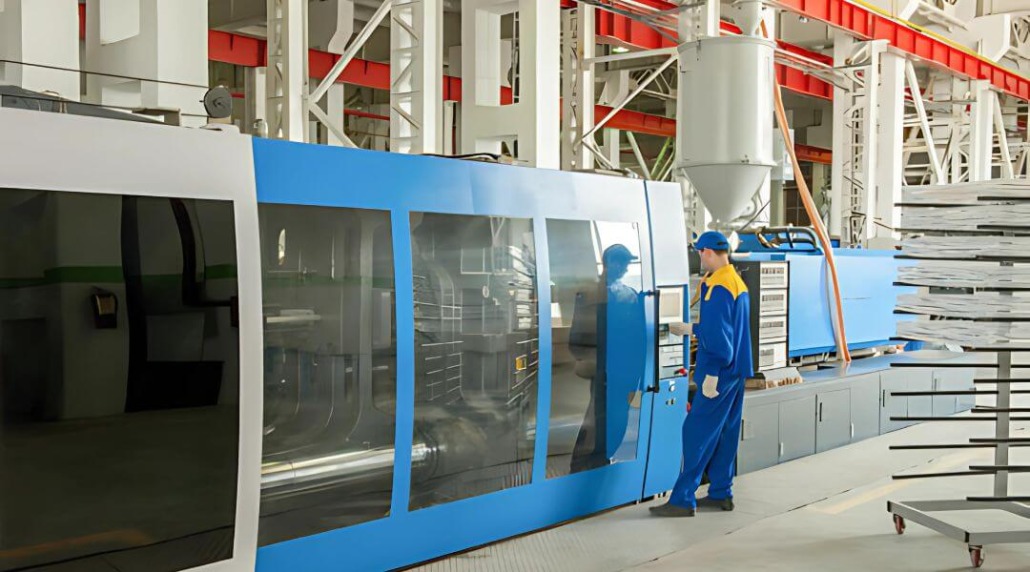










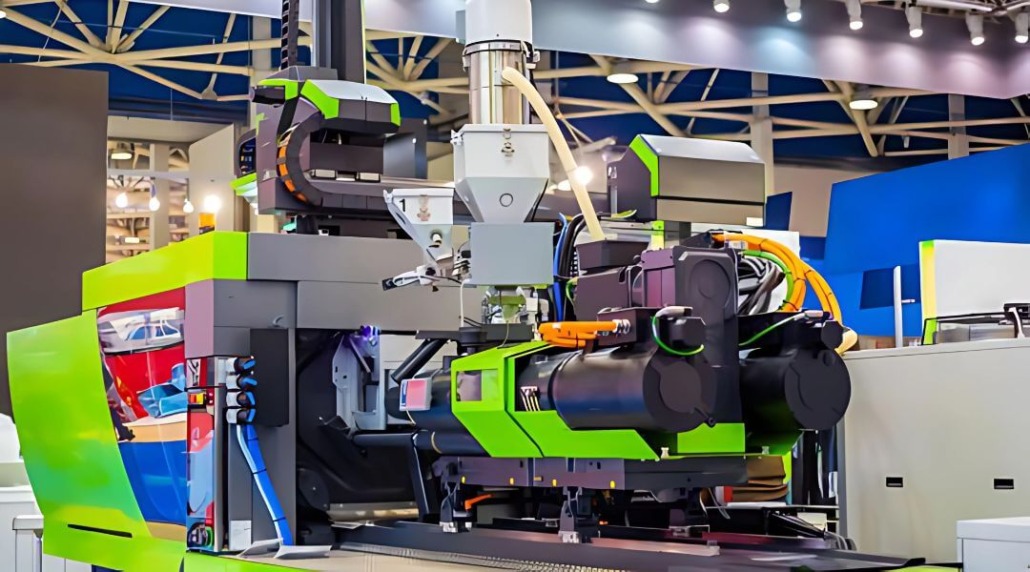











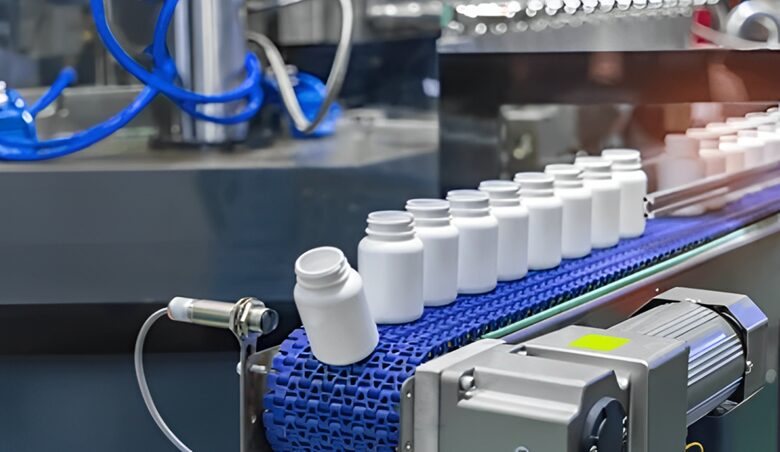
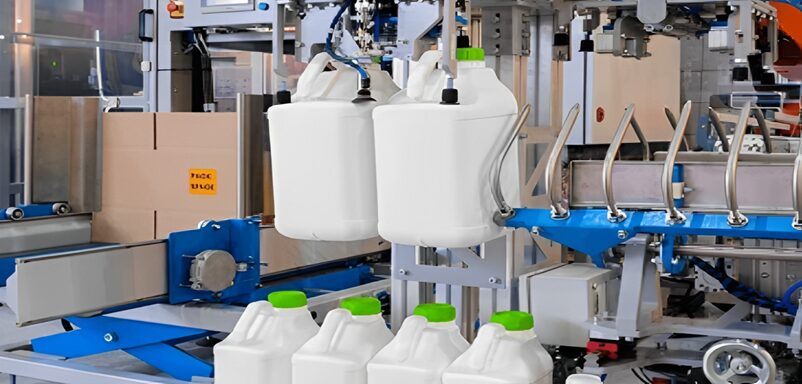
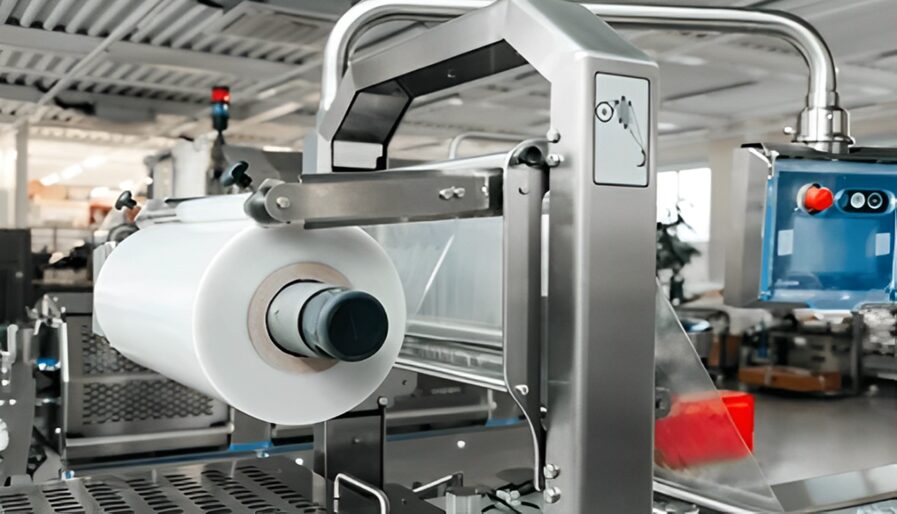
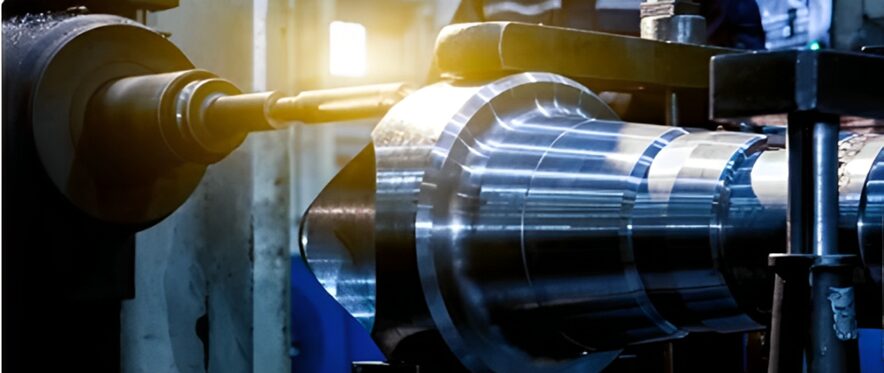
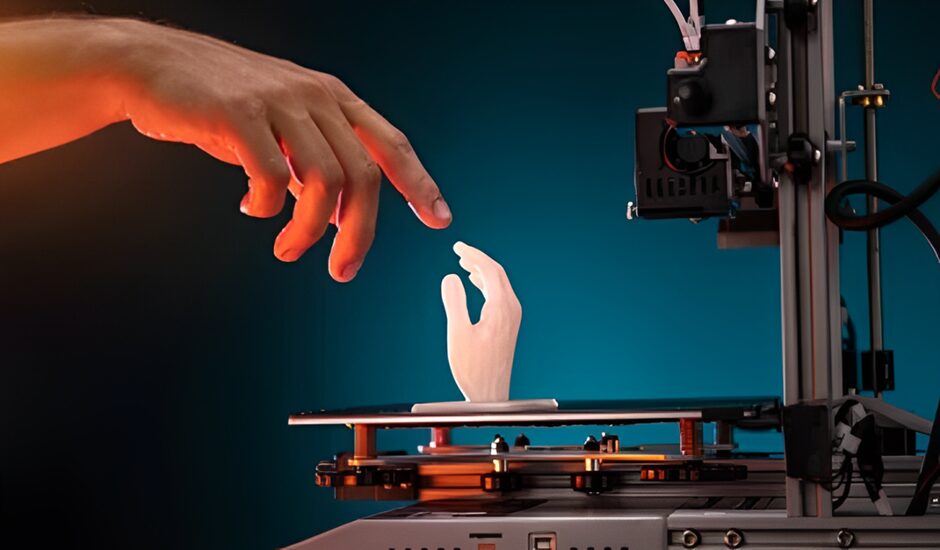
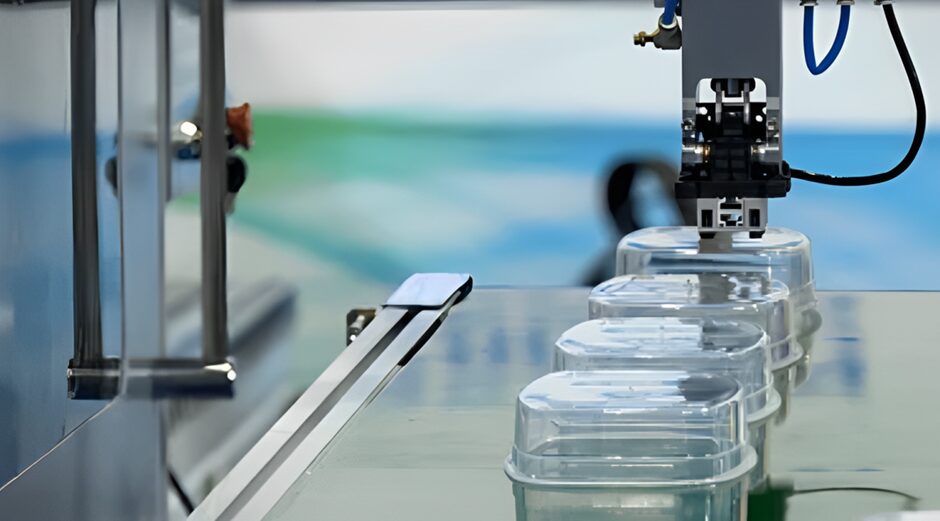
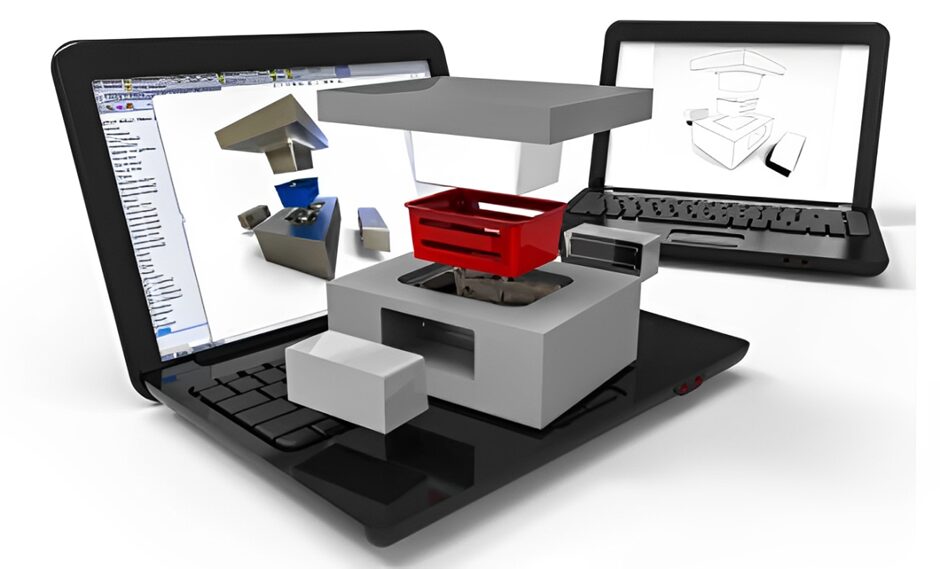
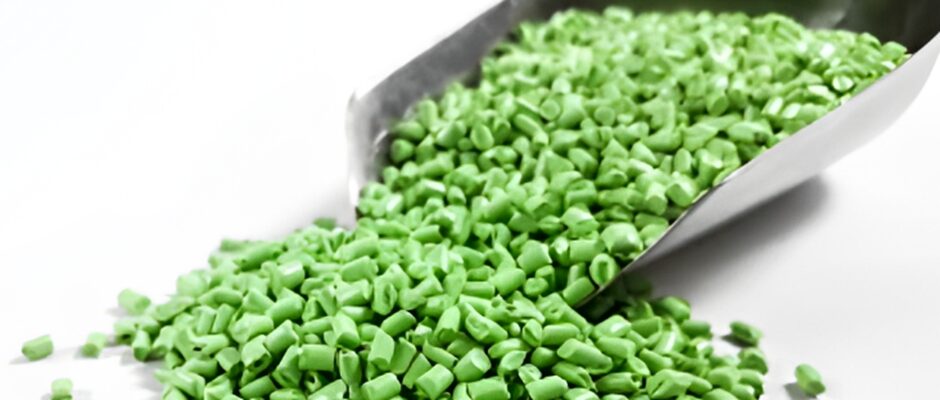
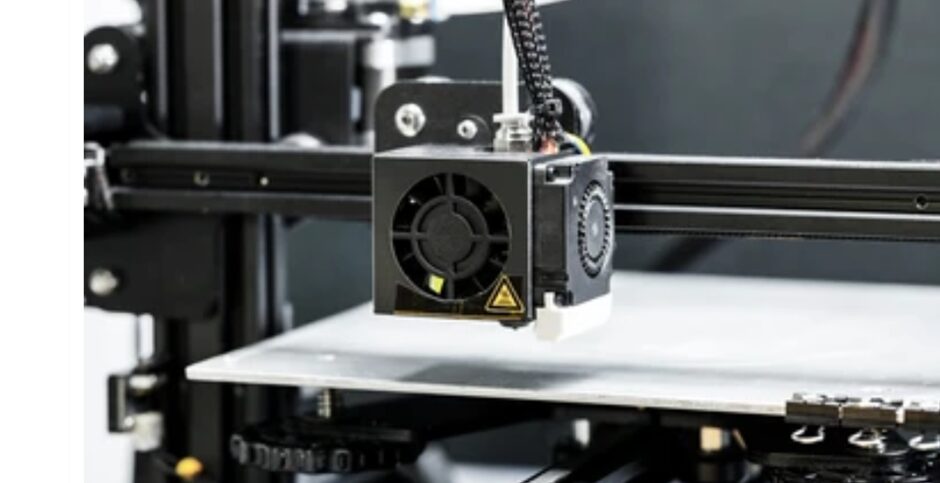
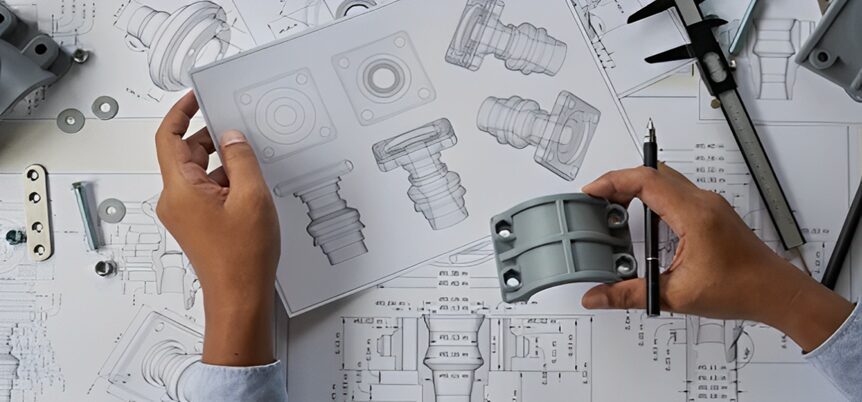
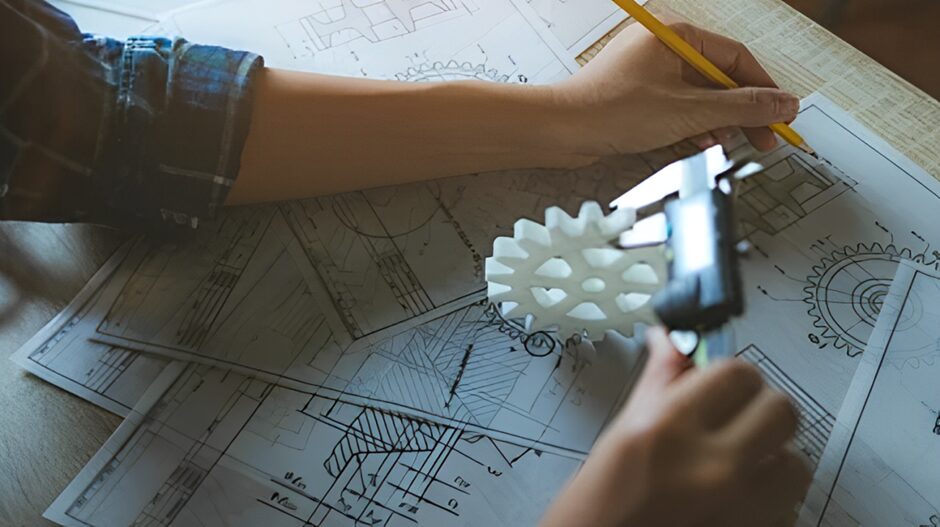
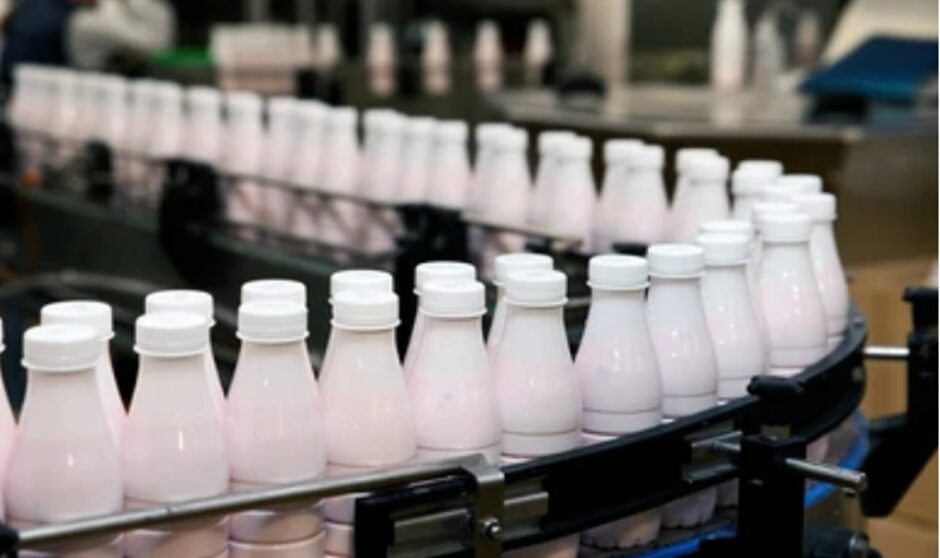
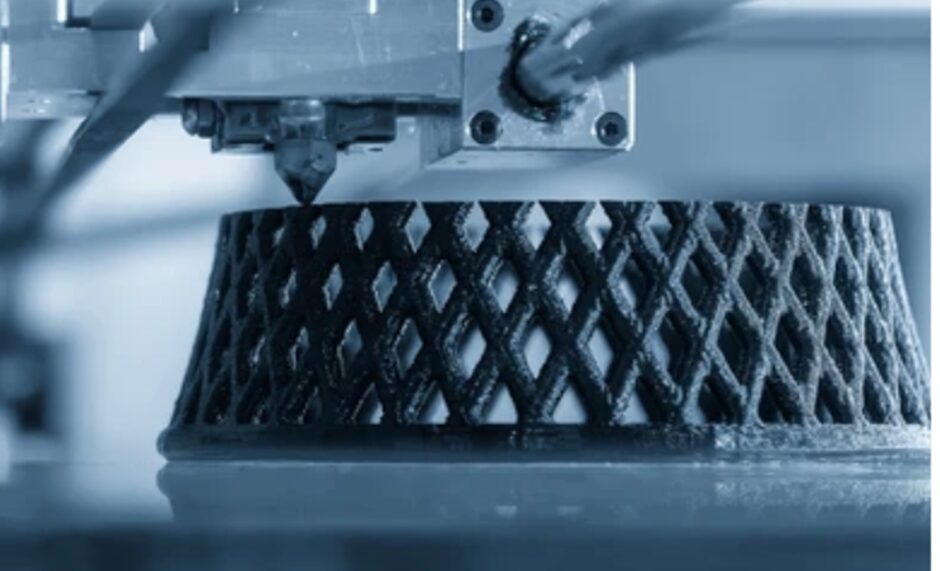
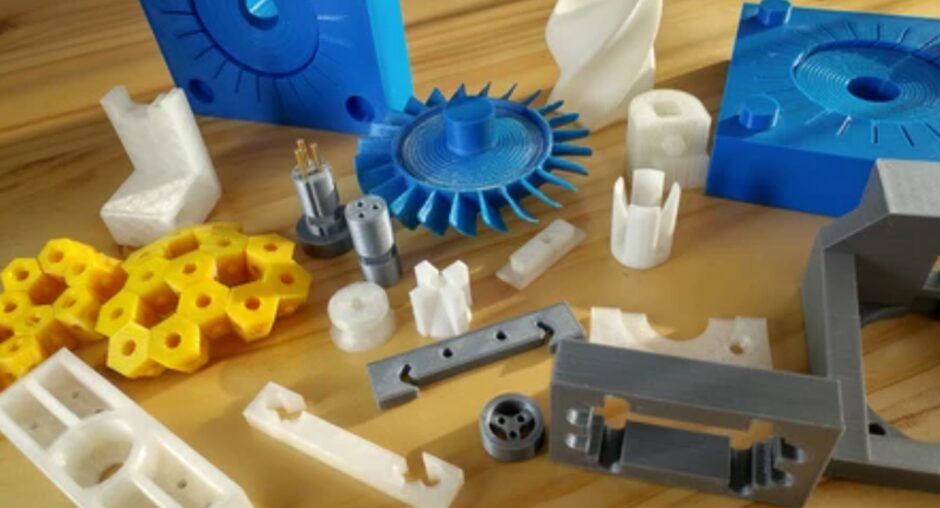









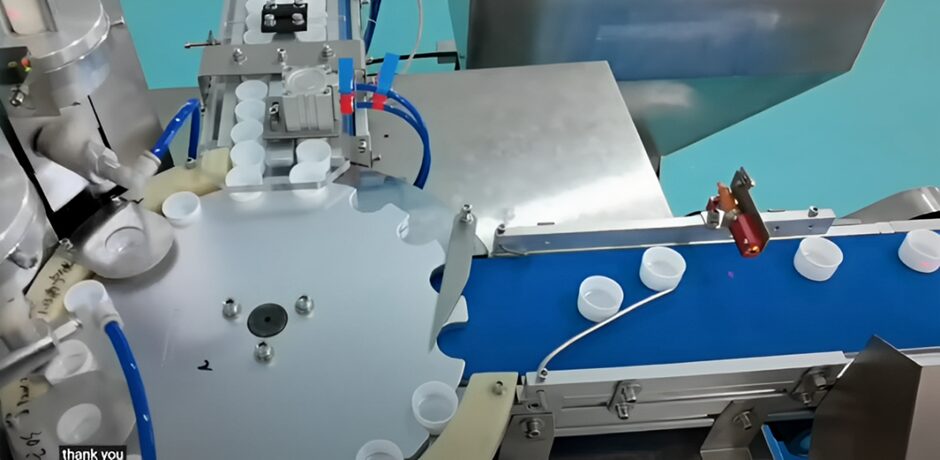
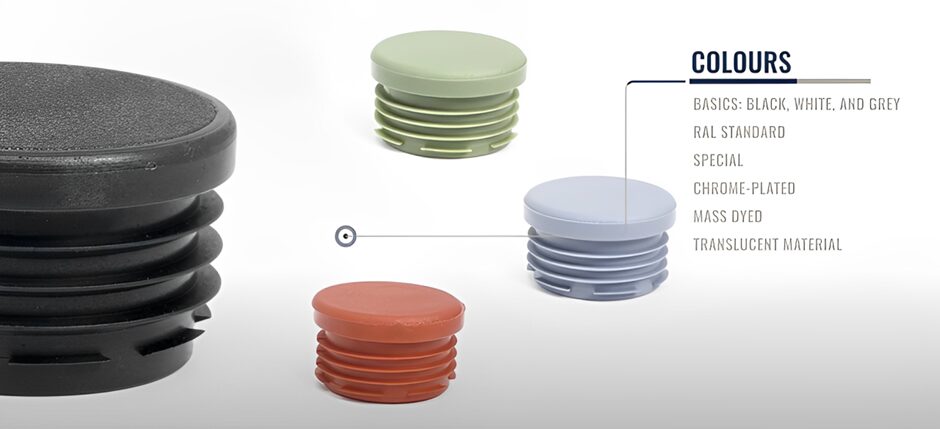


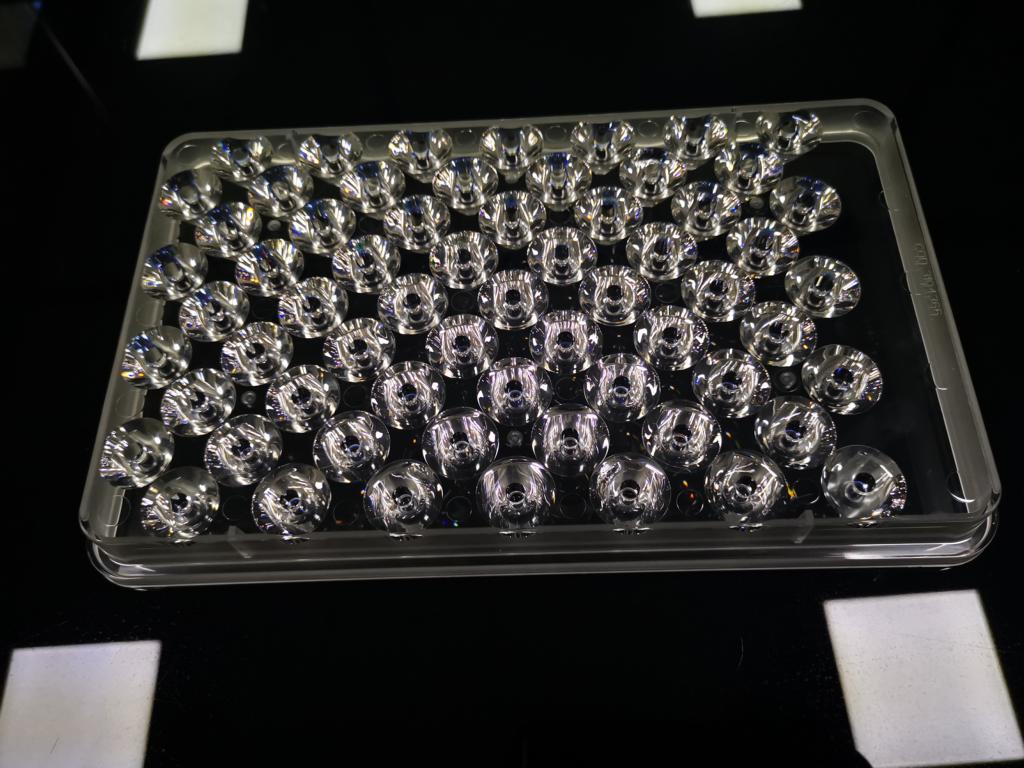
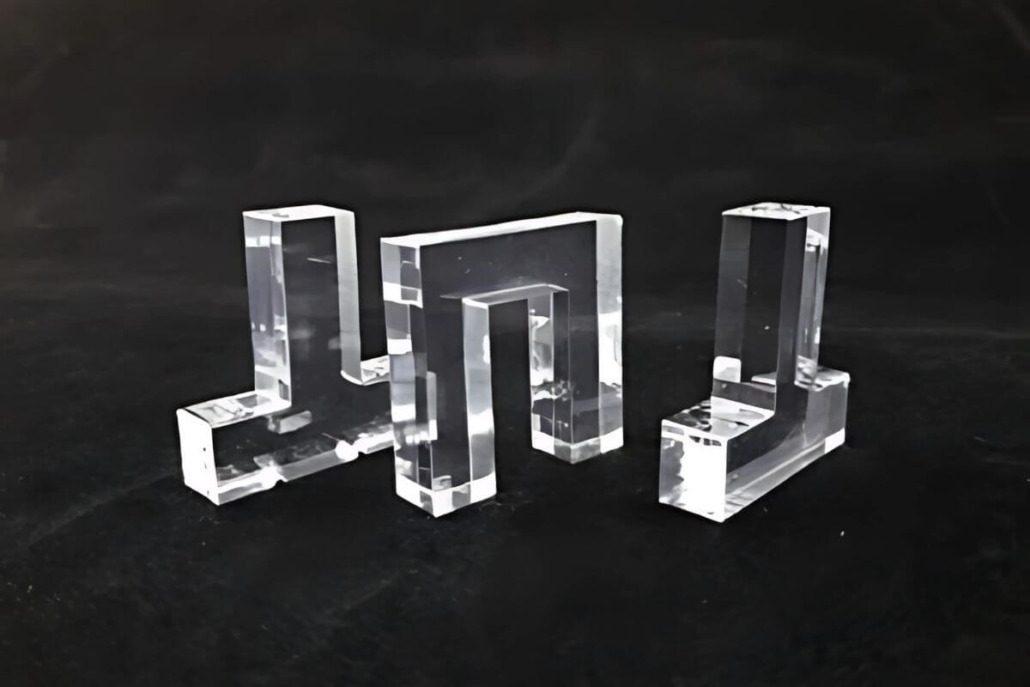
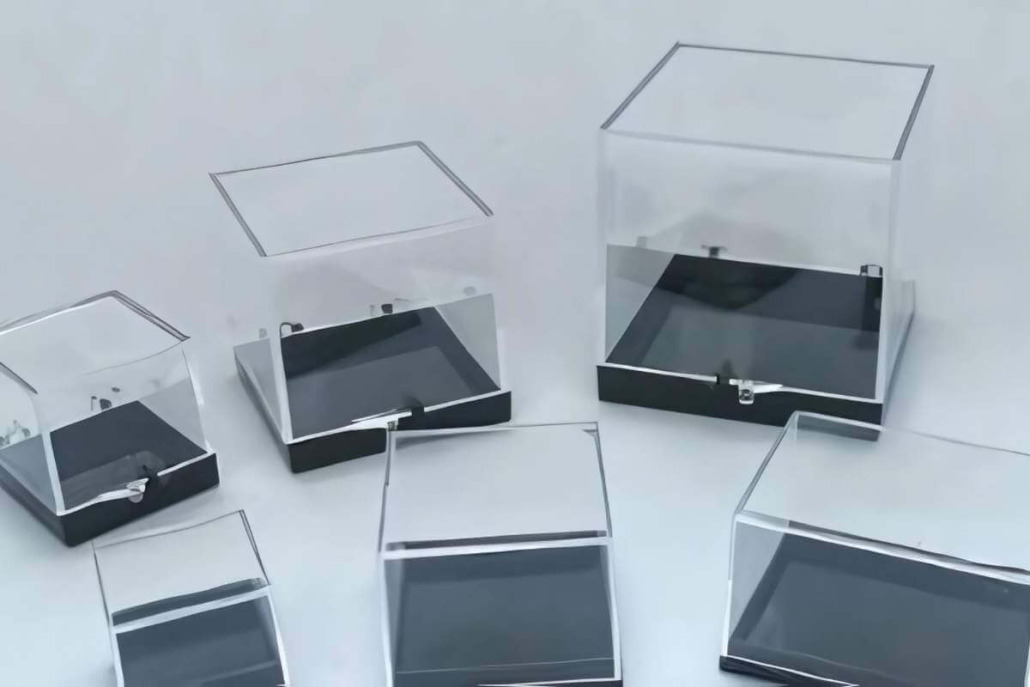
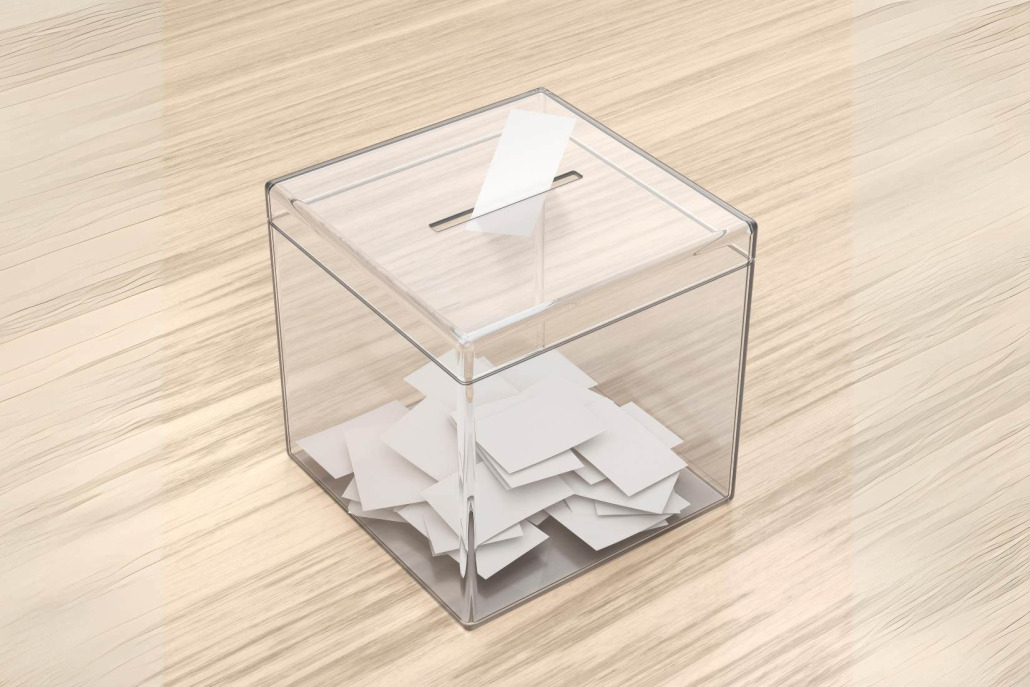
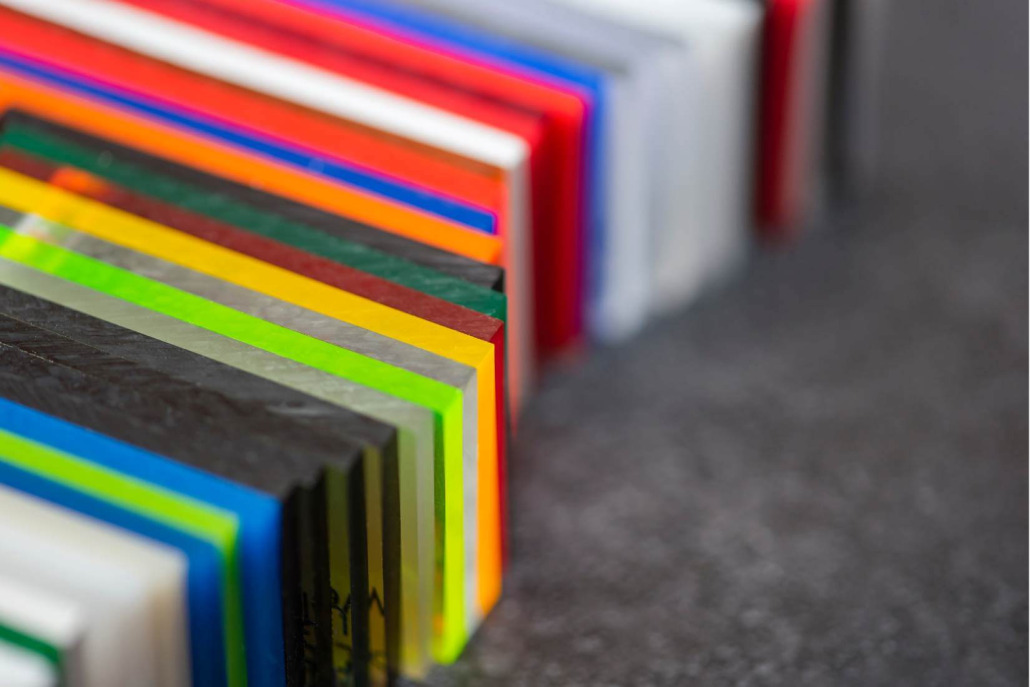



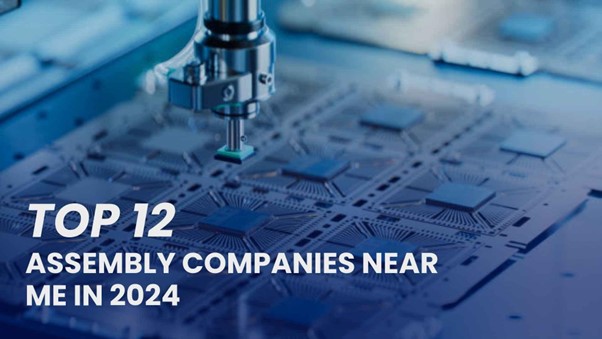
 Dongguan Sincere Tech Co., Ltd. biedt een uitgebreide
Dongguan Sincere Tech Co., Ltd. biedt een uitgebreide 
